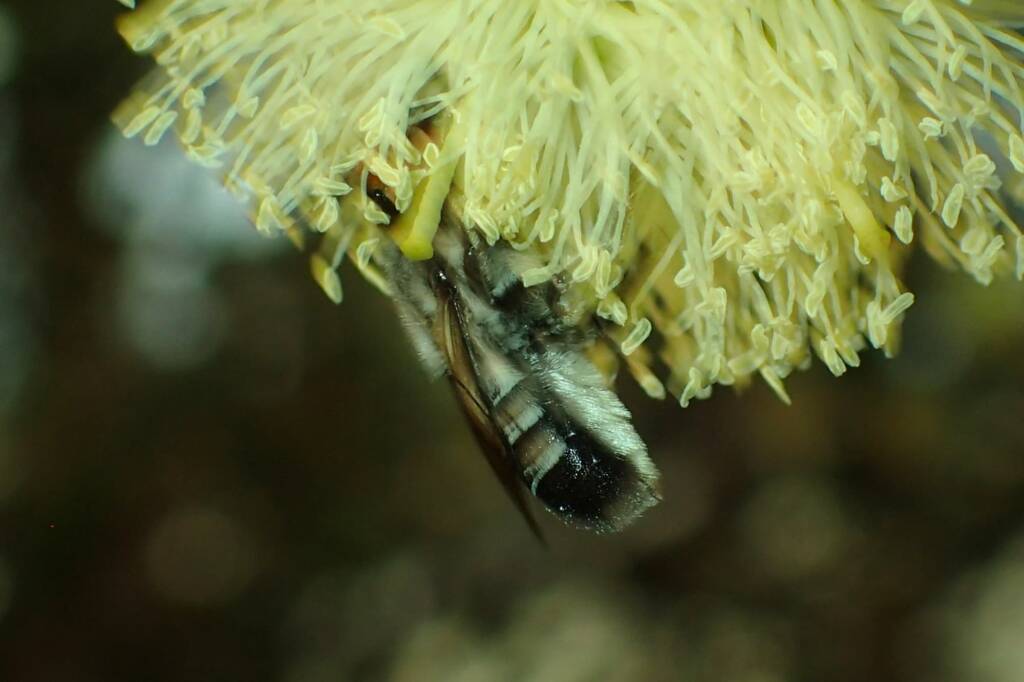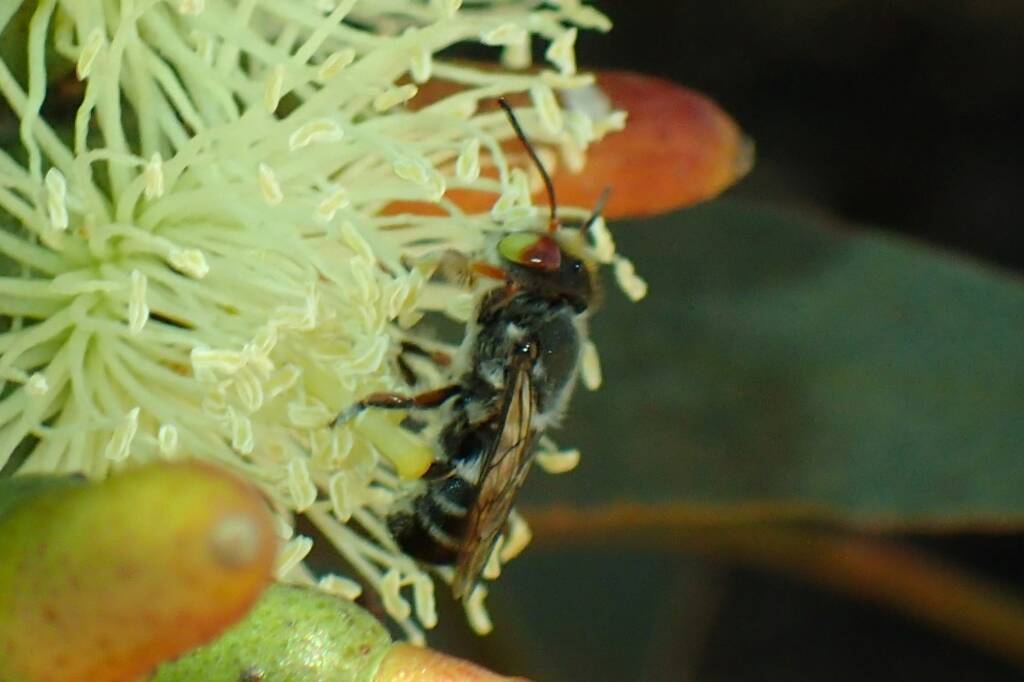Author Gary Taylor ◦
And the flavour of the month goes to… Megachile aurifrons! Well done Fronsy! There’s been some great pics… I didn’t get any 😅 In the first pic she seems to have small eyes and a weirdly long face, sorta like a cross between a bee and Ogre faced spider (Hope you’re feeling better Annette!).

In the 2nd pic… (Whoa, Hang on, that didn’t sound right, the reference to Annette was ‘cos I know she loves spiders and will understand the connection… 😆), in the 2nd pic, amidst the white and black she has pale tan bands… Yeah, nah she doesn’t, that’s just some kind of strange light refraction thing. Either that or my camera has caught a dose of AI, infected while connected, and is producing it’s own version of what it sees… Sounds crazy but I swear the next pic off the roll was a leafcutter with only one wing… 😂

So, third pic, here’s a normal one 😃

4th pic is the male with his almost demonic red glowing eyes, indicating he is a force to be reckoned with… Buuutt…

5th pic shows the typical trait I’ve noticed in male Megachile of actually having two toned eyes…In this case the top half is red and the bottom half is yellow, like the rose of friendship, showing he may be a devil in bed but he’s still in touch with his feminine side… 🤣

True, I may be reading a bit too much in it, but there has to be reason for it… the two toned eyes that is… Do they pick up different spectrums of light? Identifying colours and markings we humans can’t see? Parrots and Mantis shrimp can, we know bee vision is toward the ultra violet end but seriously how much do we really know? So yeah nah dunno, it’s just one of the many mysteries of our beautiful native bees… 💕
Here’s where Ken or Megan put’s up a fascinating paper on why male native Megachile bees have two toned eyes… So! Ken, it’s over to you…. 😃
Photographs © Gary Taylor
Ken Walker
There’s a whole PhD needed to completely answer Gary’s question about bee’s different eye colours. In brief, human and bee eyes are quite different.
All light is perceived by all eyes through structures called photoreceptors. In humans, we have two types of photoreceptors- cones for daylight vision and rods for night vision. Insect eyes are far more complex as they can see different wavelengths to what humans can see and importantly they can see polarised light, which humans cannot see, which provides insects with an excellent GPS navigation system.
To see polarised light you need eye structures that can align with the direction of the polarised light “vibrations”. Bees eyes contain photoreceptor that look just like a toothbrush – lots of elongated tubes called microvilli. When the direction of the polarised light vibrations aligns with the direction of the toothbrush microvilli then it fires off a signal to the brain. Multiple these signals by thousands and you can see polarised light.
Now, bees eyes need to perform two main functions. See colours on flowers to find pollen and nectar resources and see polarised light as their built in GPS system but each part of the eye cannot serve both functions at the same time. To solve this problem, bee eyes are ingeniously designed so that just the top half of each eye sees polarised light and the bottom half of each eye sees colours. This makes perfect sense as the bee basically needs to look up to the sky to see polarised light and down to see the colours of flowers. While the toothbrush microvilli are all straight in the top half of the eye which allows them to see polarised light, the toothbrush microvilli in the bottom half of the eye are twisted which disables the ability to see polarised light. These different structures within each bee eye reflect different colours seen by the human.
That’s just the beginning of a long, complex and fascinating answer. Evolution is excellent at creating solutions to different design and function needs in different life forms. Gee – I wish I had an inbuilt GPS navigation system, could see UV light but I would miss seeing the colour red.
Check out more blogs and contribution by Gary Taylor.
